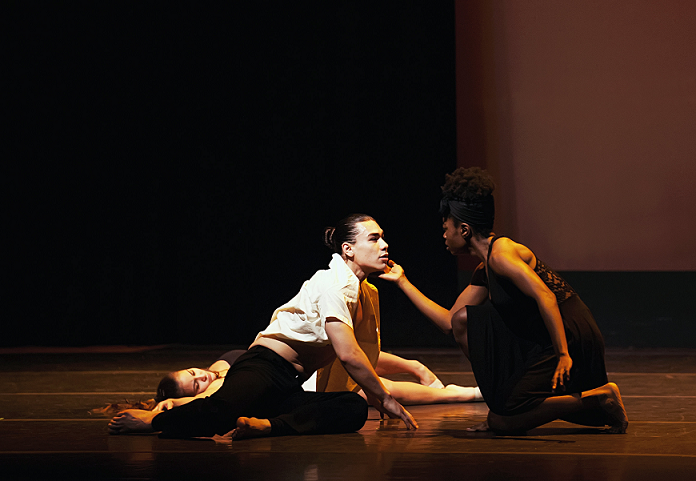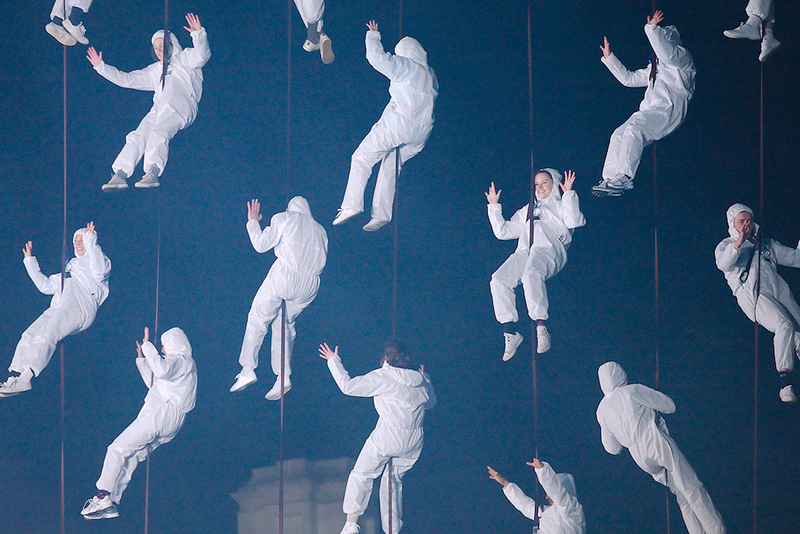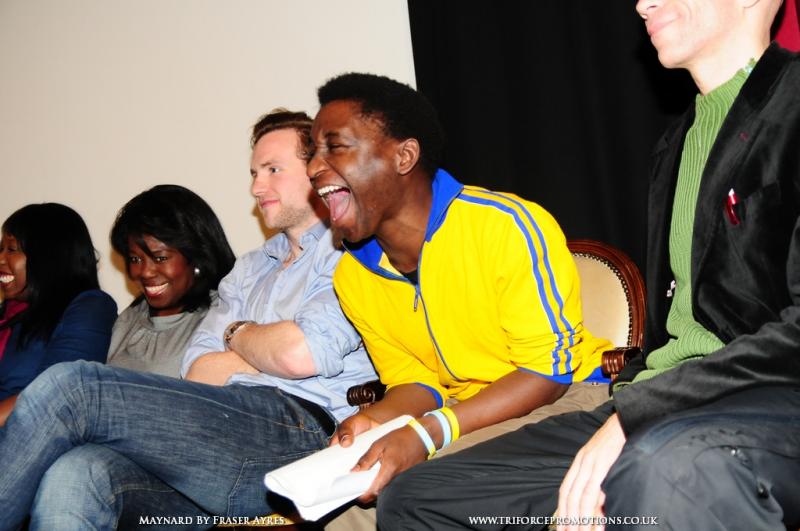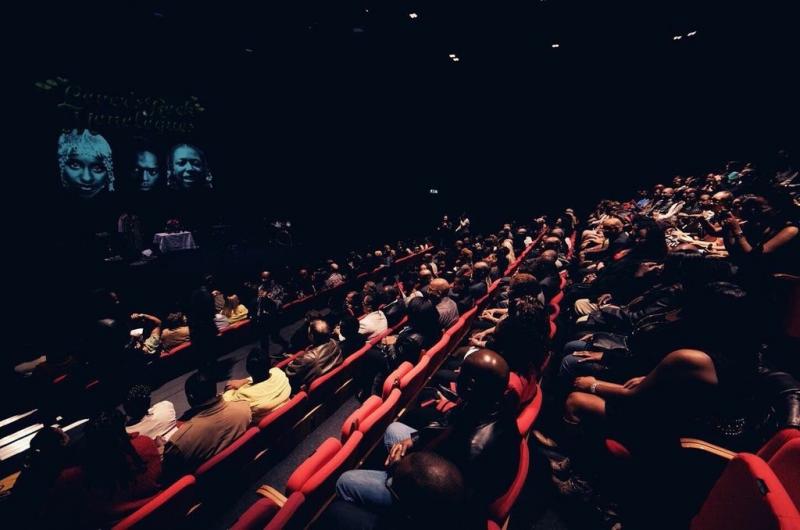
The Center for Contemporary Dance
Photo: Lisbet Photography
Arts diversity: The quota conversation
Quotas in the arts failed in the 1980s. But now is the time to champion their reintroduction, across workforce and artistic programming, argues Christy Romer in the fifth in a series of articles.
Ask anyone in the arts about quotas, and more likely than not, you’ll get some form of commitment to a ‘conversation’. As in, ‘we should talk about whether or not to use quotas’, rather than, ‘quotas should / should not be applied’. It’s less, ‘show me a quota, and I’ll show you a failure’, and more, ‘these tools are limited, but I can’t bring myself to dismiss them’.
This brand of careful, qualified support is on display everywhere. Across artforms, across the live and recorded arts, across the pond. Which isn’t to say people don’t know where they stand – some flat-out reject the very idea of introducing quotas. But these people are often torn, labelling quotas superficial, tokenistic, resentment-breeding sticking plasters which are the necessary first step to rectifying decades of inaction.
This played out in a recent AP survey of attitudes to diversity in the arts. There was neither majority support for quotas, nor a majority rejection of them, with the percentage of people ‘unsure’ large enough to sway either side. But people with disabilities or from a black or minority ethnic (BME) background – two historically disenfranchised groups, which remain under-represented in the sector’s workforce – were “more likely than most to favour penalties, quotas and naming and shaming”.
A history of failure
With this in mind, and the continuing lack of change, is now the time to deliver on the quota ‘conversation’ and introduce them?
Not if they look anything like the Arts Council of Great Britain’s quotas from the 1980s. In 1986, the Council produced an ‘Ethnic Minority Arts Action Plan’. In it, the Council agreed that “by the end of two years a minimum of 4% of its expenditure will be committed to Afro-Caribbean and Asian arts, the employment of Afro-Caribbean and Asian people and the encouragement, through marketing, of audiences from these communities”.
| “I don’t know about quotas. If quotas were a way of achieving true diversity, it’d be brilliant. If that would work. There’s nothing I’d love more than having the bare minimum which matches the city. And if you had to do it, you’d make it the absolute priority. They would force things to happen. It’s hard to give a definitive answer.” – James Brining, Artistic Director, West Yorkshire Playhouse |
A monitoring report published two years later branded the plan “not completely successful”. It found that its quota “could initiate debate but it offered no solutions”, and that fulfilling the needs in the long term required “more time and consideration than the plan offered.” Crucially, arts organisations were invited to “consider” the development and promotion of Afro-Caribbean and Asian art-forms, and the “opportunities” for the appointment of people from these communities to their arts staff and management bodies.
“The policy had the potential to lead to a more diverse outcome,” reflected David Bryan, now on Arts Council England’s (ACE) board, “but it fell flat because it wasn’t fully supported by the Regularly Funded Organisations as they were known at the time and the Arts Council was unwilling to drive change. It didn’t have as strong a commitment as it demonstrates currently.”
Greener grass
A better quota reference for some, including Kerry Michael, Artistic Director of Theatre Royal Stratford East, would be on-screen quotas in the US and the UK. Making reference to the US’s absolute quotas on TV, he said: “So many artists of colour from the UK go to America and become stars.”
Craig W. Johnson, Executive Director of The Center for Contemporary Dance, in Florida, was less optimistic: “There are very similar challenges in the US to the UK, and they’re bigger than quotas. The problem is a systemic inequality perpetuated by the failure to prioritise diversity. If arts leaders continue to undermine the value and ethical responsibility attached to diversity, the arts’ social makeup will never change. With quotas, we’d just be subject to achieving numbers without correcting the underlying dysfunction.”
But he accepted that underlying diversity challenges had not been addressed: “The decision makers are from the same exclusive group as they’ve always been. It can be like talking to bricks. They say all the right words, but there’s an enormous gap between those words and the action needed to fulfil those words.”
| “I think the TV has been appalling demonstration of equality. I think it’s been more embarrassing than the arts in general. It’s great to see more black actors have walk on roles and the odd couple of sentences, but I don’t see much else happening.” – David Bryan, board member, Arts Council England |
What about TV quotas in the UK? Minnie Ayres – whose company, the Triforce Creative Network, has just launched an 85% BME panel show on ITV2 – said she wasn’t so sure how well quotas at the BBC, Sky and ITV have worked. "TV is still not very diverse. There might be more noise than in the arts, but I don’t think it’s any more diverse – especially not off screen. The gatekeepers are still overwhelmingly white and male. There have been schemes to place more diverse commissioners in the industry, but they’re normally in assistant positions on short term contracts. There’s a limit to what can be achieved.”
“I don’t know how seriously people have taken them,” she added. “Quotas don’t change decision makers. They never affect them.” For her, the goal was clear. “We need to make sure we have more diverse controllers. But there’s only 20 or 30 roles, and it’s a bit like musical chairs – they move around between the top roles. Until we have diversity in those roles – or diversity of thought – we won’t see massive change.”
Yet this is exactly the point at which more effective quotas could be successful. “The quotas process begins when all else has failed, with a set of aspirations to reduce the discrimination gap,” said David Bryan. “First we appeal to the intellect and we wait for umpteen years for the enlightened to find ways of making their organisation better. That completely failed, decade after decade, both in the institutions of grant giving – the Arts Council and Lottery have failed – as did arts and creative industries in recruitment. They’re closed cultural shops instead of open inclusive environments. So we turn to quotas as a stick.”
What kind of quota?
But even if a decision is made about quotas, multiple challenges emerge. “How would quotas work?” Ayesha Casely-Hayford, Chair of the Act For Change project, asked. “Would you have regional quotas? Per artform? Per protected characteristic? You have to reflect society and allow quotas to be fluid, which contradicts their very nature.”
| “Yes to quotas. Once you’ve got quotas in, you stop worrying about them. Every subsidised theatre should pay for a senior manager of colour themselves. If you’ve all got to do that, you just get on with it and find the best person you can. You don’t fight it. We’re all competitive so go for the best talent. You’ll be more creative, and you listen better.” – Kerry Michael, Artistic Director, Theatre Royal Stratford East |
The BBC has quotas on gender, disability, ethnicity and sexuality. Ofcom has quotas for regional output and subtitling. Should arts organisations implement all of the above, including an older person quota and a class quota? Should they be allowed to choose a number of quotas which are most relevant to their region and output? How should they overhaul a workforce to fulfil a quota within a certain timeframe?
Casely-Hayford went on to contrast workforce quotas in the corporate world with the arts, saying it’s easier to recruit to percentages when you’re solely measuring quantifiable experience. “How do you measure artistic talent and experience? That’s a debate in itself,” she said.
In addition, there’s the question of whether quotas would be equally applicable across artforms and across job roles. Many people claim that there’s no lack of ‘diversity of talent’ in the arts – and that, instead, pipelines into employment are simply blocked. But would enforcing a quota be possible? Damian Cruden, Artistic Director of York Theatre Royal, seemed pessimistic: “On a permanent staff basis, you might just not fill the roles. You can’t make people apply for jobs. You can’t make people move from London to York to fit a quota. What do you do – leave a job empty? In certain areas, perhaps London, that might be enforceable.”

Let them choose
Some have called for organisations to set their own targets and quotas. Rufus Norris, Artistic Director of the National Theatre, said: “Whether there should be enforced targets is a different question – I just don’t think there can be a one-size-fits-all approach to the industry’s issues around diversity. Organisations must look at what is achievable and realistic for them, and challenge themselves to make changes.”
| “Now is the time to try something new. Even if you end up concluding quotas don’t work for your organisation, they should be considered.” – Ayesha Casely-Hayford, Chair, Act for Change |
One such target was championed by Cruden. “I don’t think quotas in employment work,” he said. “But what does work is giving people opportunities to be seen and heard in enough numbers in a critical difference.”
Instead of implementing a quota for those cast in productions, he puts a quota on those who are seen for an audition. “Our casting director has a responsibility to sit within guideline percentages. She’s working off 20% BME and disabled actors – that’s a minimum that we must see. In reality, we’ve exceeded those.”
In the Theatre Royal’s production of Sherlock Holmes, Cruden said that 36% of the women met and offered jobs were BME, and 18% were disabled. For the men, this was 41% BME and 6% disabled. He added that the final cast included 17% BME and disabled actors, and that the theatre had “quite comfortably” achieved a target of gender-balancing the team on and off stage.
“We don’t have minimum guidelines when we cast because you remove something from the process. I think what happens is that if you see enough people, you can’t ignore it: if someone’s good in the room, they’re good in the room, and if you’re good at your job as a director, you won’t ignore them because of their colour or physical ability.”
He continued: “You will always come across people who have issues with any kind of quota at any point. If you point the quota to how you contact people in the first place, you start to really make inroads into change. You give people from different backgrounds the perception that you are interested in what they have to offer. And people think, ‘I might not get a job this time, but I might get it next time, or the third time’.”
Limited action
The worry for many is that letting arts organisations set their own diversity targets will simply lead to pledges and good intentions which fail to grapple with unconscious bias. In short, it’ll lead to the failures witnessed in the 1980s.
“I think anxieties about the largest National Portfolio Organisations being able to undermine the system, and avoid any form of sanction or punishment for greater diversity and inclusion, are well-founded,” said David Bryan. “The recurring arts and diversity debate could all be compared to our debate around climate – we’ve known that we are ruining our climate for a very long time. What prevents us from doing anything? Self-interest.”
He added: “There must be a consequence with quotas. ACE needs to say to the world: you need to improve your inclusivity, or else. If not, organisations will write their business plan and talk about reflecting their region – ACE release the money, and they’ll do nothing. What happens then? NPO applicants (especially the larger organisations) will say the right thing. But in reality, they’ll actually do very little. They’ll say: austerity means we’re all suffering, as if some don't suffer more than others.”
| “It was always a good idea to put a seatbelt on, but people only started doing it once they got fined.” – Tony Heaton, CEO, Shape Arts |
Ammo Talwar, Chief Executive of Punch Records, expressed similar concerns about a commitment to inaction. “A recent Agent for Change programme within a theatre consortium had £800k and advertised for an experienced post with specialised disability, access and local knowledge – and ‘some art useful’ – for £22k. That’s just not right. You’ll never get anyone BME to run a major institution if they don’t reflect the panel that is in front of them.”
He seemed to suggest such an action is inevitable until the culture changes: “Until an arts organisation is taken out of the National Portfolio for not delivering on the Creative Case for Diversity, it means nothing and we have no repercussions. People know it’s not working, but until someone gets removed for not delivering, it’s easier for people to ignore it, just say we need more time or investment or blame the new BME talent pool.”
Diversity rating
2016 did appear to herald the introduction of an ACE-driven quota: the National Portfolio Organisation (NPO) diversity ratings, announced in the guidance for 2018-2022, include a requirement to diversify artistic work before funding can be received. If NPOs fail to ‘meet’ the required standards, sanctions such as extra conditions on grant payments, withholding payment, or withdrawing investment could be enacted.
But the ratings will not assess workforce diversity. This, for David Bryan, is a mistake. “I think that our [NPO] diversity ratings should’ve included workforce so we’re better equipped to provide a clear analysis of progress,” he said. “I think the large institutions should pave the way by demonstrating good practice. They have the capacity, resources and the infrastructure to lead the way. Maybe everyone needs to be compliant within a timeframe, say year one or two, but without a doubt large institutions should demonstrate leadership and character.”
From listening to these people – in the arts, on screen, in the US – it’s clear that no system is as diverse and welcoming as it needs to be. No-one in the arts is particularly optimistic about change, because underlying problems seem to remain constant. But this is largely because the people making decisions seem to remain constant.
It’s here where quotas could have an effect. They’re a blunt, limited tool, but they can highlight poor practice, force change, and hone in on stagnating leadership.
It’s 2016. Whatever the sector decides, it has to be something that ensures we’re not discussing diversity ‘challenges’ in the same way in 2030.
“ACE appear to be taking a back seat on this,” Ammo Talwar added. “They should have a firm set of objectives, and now is the time for quotas. Look – [audit firm] KPMG are introducing quotas.
“The only reason you introduce them is when policy has completely failed. And diversity policy has failed miserably.”
Christy Romer is a journalist at ArtsProfessional.
Inset photo 1: The Triforce Creative Network
Inset photo 2: Graeae's 'Prometheus Awakes', Dr Max via Visualhunt.com / CC BY-NC-ND
Inset photo 3: Lovers Rock Monologues gig 2015, Punch Records
Click to read ArtsProfessional’s latest news, research and feature on diversity in the arts


Join the Discussion
You must be logged in to post a comment.